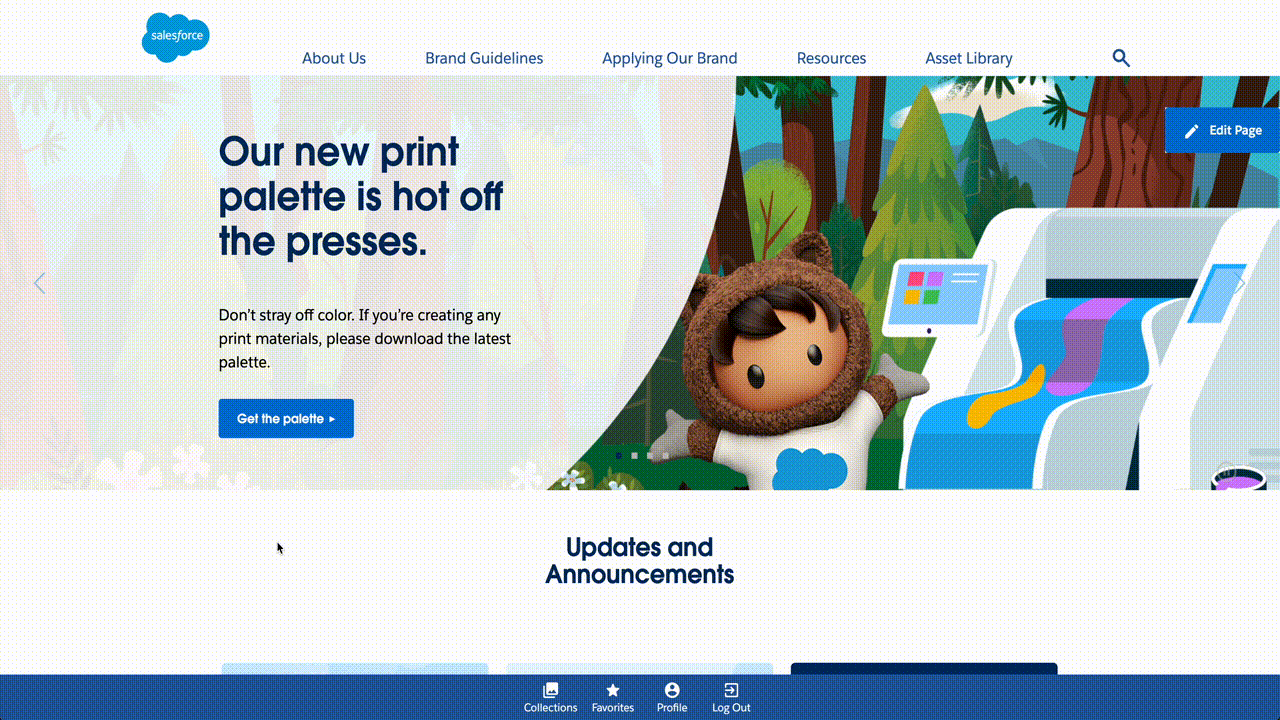Interactivity in Brand Engagement
How Interactive Elements in Brand Guidelines Foster a Stronger Connection Between Brands and their Stakeholders
Interactive brand guidelines incorporate dynamic elements such as clickable prototypes, engaging videos, interactive infographics, and user-driven content exploration tools to engage users and drive understanding. This is a massive leap from the traditional playbook where brand guidelines are compiled and distributed through static PDFs and cumbersome internal-built sites.
But why are these interactive elements so powerful? Let’s break it down.

1. Capture Attention with Immersive Content
Interactive brand guidelines transform static content into engaging experiences. Instead of merely reading about brand principles, users can actively explore them. Here’s how interactivity enhances engagement:
- Interactive Prototypes: Users can click through design prototypes to see how different elements come together in real time. This hands-on experience helps users understand the brand’s visual and functional aspects better.
- Dynamic Infographics: Unlike traditional infographics, interactive versions allow users to hover over elements for more information, making learning about the brand’s history, values, and vision more engaging and informative.
- Interactive Storytelling: Story-driven interactions, such as guided tours or scenario-based exercises, help users connect with the brand’s narrative on a personal level.
These interactive features not only capture attention but also encourage users to spend more time exploring and learning about the brand.
2. Take the Leap from Awareness to Understanding
Interactivity creates a more immersive experience, allowing users to form a deeper connection with the brand. Here’s how immersive experiences foster stronger connections:
- Personalization: Interactive elements can be tailored to different user needs and preferences. For instance, users can select different themes or views based on their interests, making the brand experience more relevant to them.
- Emotional Engagement: Interactive experiences that tell a story or showcase real-life applications of the brand’s products or services can evoke emotions and create a lasting impression. This emotional connection is crucial for brand loyalty.
- Active Participation: When users actively engage with brand content—whether through quizzes, interactive challenges, or customizable content—they feel more involved and invested in the brand.

3. Enable Brand Consistency
Brand consistency is essential for building trust and recognition. Interactive brand guidelines can reinforce consistency in several ways:
- Clear Visual Standards: Interactive guidelines can showcase the brand’s visual identity in action, demonstrating how logos, colors, and typography should be used across different contexts.
- Real-Time Feedback: Some interactive guidelines offer real-time feedback on how brand elements are used, helping designers and marketers ensure they adhere to brand standards.
- Training Tools: Interactive elements can serve as training tools for new team members or partners, ensuring everyone has a clear understanding of the brand’s identity and guidelines.
4. Leveraging Analytics to Refine Brand Strategies
Another advantage of interactive brand guidelines is the ability to collect valuable data. By tracking user interactions, brands can gain insights into how their guidelines are being used and identify areas for improvement:
- User Behavior Tracking: Analytics can reveal which sections of the brand guidelines are most and least engaged with, helping brands understand what resonates with users.
- Feedback Mechanisms: Interactive guidelines can include feedback options where users can share their thoughts and suggestions, providing brands with direct input from their audience.

Case Study: How Beam’s Interactive Brand Guidelines Impacted Salesforce's Public Brand
Beam was tasked with revamping the brand guidelines for Salesforce aiming to establish a strong market presence. Instead of delivering a traditional, static document, Beam created an interactive brand portal featuring:
- Clickable Prototypes: Users could explore different user interfaces and see how the startup’s products worked in real-time.
- Dynamic Brand History Timeline: An interactive timeline allowed users to trace the startup’s journey from inception to present, highlighting key milestones and achievements.
- Customizable Brand Templates: Users could personalize templates for various marketing materials, ensuring that brand elements were used consistently.
The interactive brand guidelines not only captured the vision but also engaged users more effectively. Feedback showed that users appreciated the hands-on approach, leading to a better understanding of the brand’s identity and a more consistent application of brand standards across marketing efforts.
Dig Deeper
Learn more about how Beam helped build the foundation of Salesforce's global brand.
Incorporating interactivity into brand guidelines offers numerous benefits, from enhancing user engagement to building stronger connections with stakeholders. By creating immersive, engaging, and dynamic brand experiences, businesses can foster a deeper relationship with their audience and ensure that their brand message is communicated consistently and effectively.
At Beam, we believe the connection between brand and people is a powerful accelerator. If you’re interested in exploring how interactive brand guidelines can elevate your brand, reach out to us for a consultation using the form below!
Contact Us
Let's Connect
Have questions or want to learn more about how Beam can help your business? Get in touch with us today. We're here to help you navigate the digital landscape with ease.